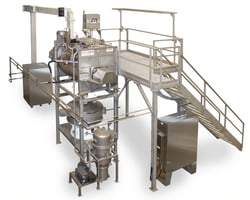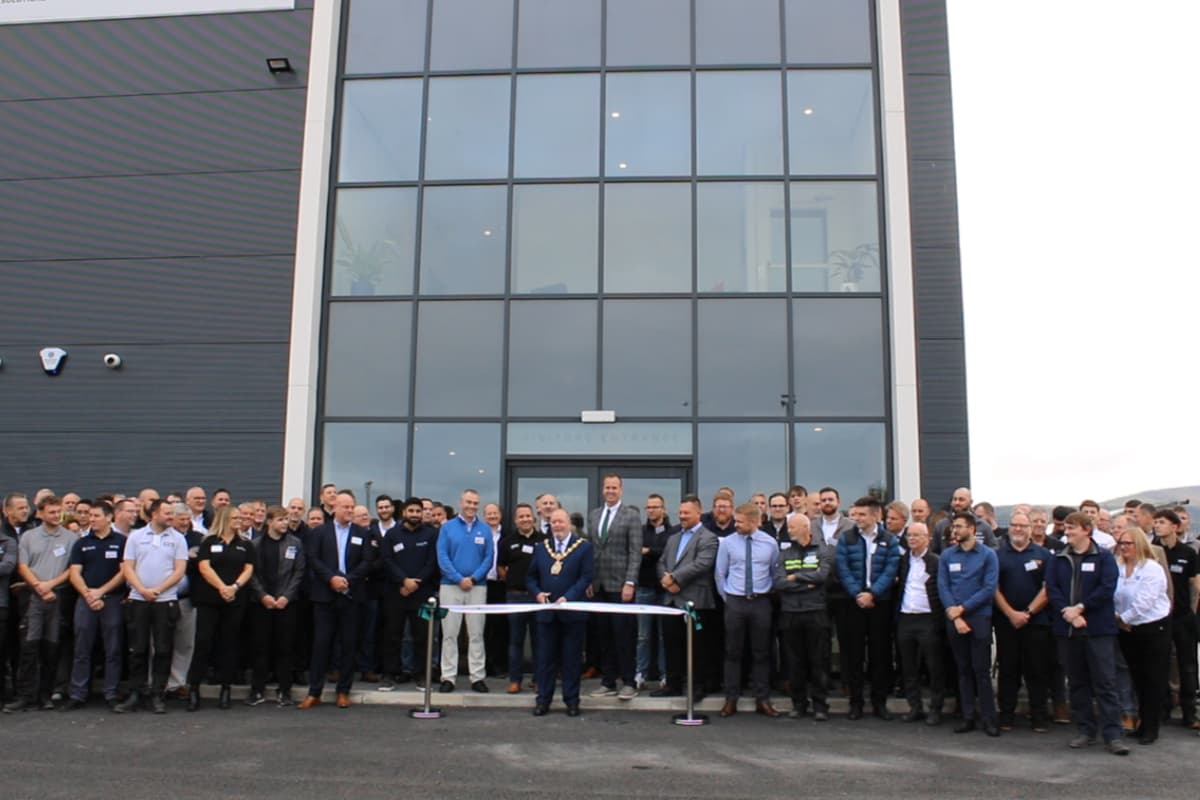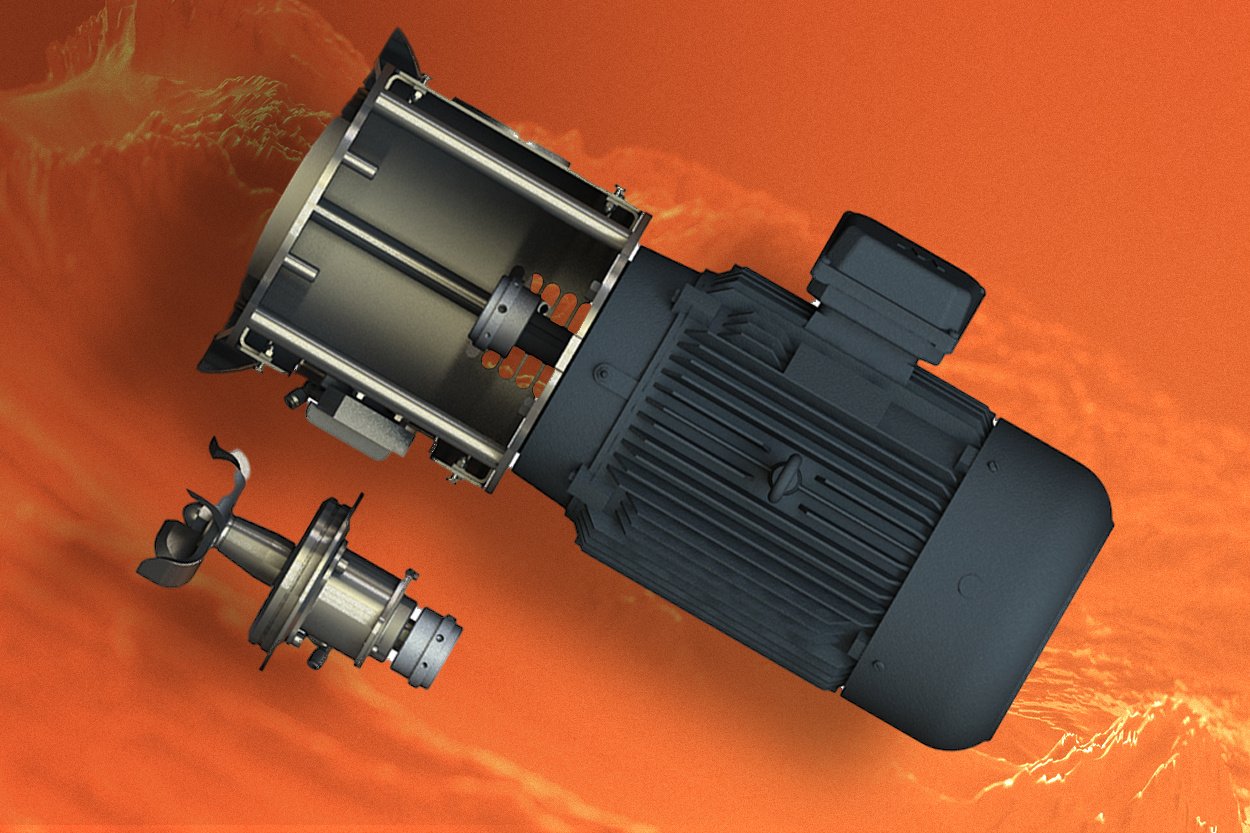Evaluating Thermal Processing Equipment for Cannabis and Hemp
Selecting the proper thermal processing equipment is a critical decision for companies in the
burgeoning cannabis and hemp market. It’s not just about the immediate capital cost of the machine, which represents a significant investment, but the long-term costs that need to be factored in as well. Industrial ovens, coolers, microwaves and dryers can last 20 or more years. Your choice of thermal processing equipment affects the quality of the materials produced, operational costs of the plant, product costs, safety of the workers and the potential for material loss during the process. The most important considerations when choosing the right thermal processor for cannabis and hemp are:
- Drying temperature range
- Temperature control
- Costs and efficiency
- Throughput

Drying Temperature Range
Thermal processing can range in temperature from –58⁰F (–50⁰C) all the way up to 5400⁰F (3000⁰C). For cannabis and hemp, the subtlety of the temperature range is quite important.
Using a temperature that is too high can negatively affect the quality, and when the temperature is too low, the desired chemical reactions may not be properly triggered. Also, using a low temperature generally means longer processing times. For example, hemp has been traditionally dried by hanging plants in large facilities and allowing them to be dried by the ambient air, which can take weeks or months. Not only is this incredibly time-consuming, it requires a massive investment in real estate, and can introduce other unintended consequences such as mold or uneven drying. Industrial drying with WaveMix technology allows for much faster and lower-cost production of a variety of products.
Temperature Control
Precise drying is essential to the overall quality of the finished product. Very few drying or curing methods can provide the highly controlled environment that WaveMix, because most thermal processing methodologies use air or fluid (indirect) heating processes.
Microwave is a direct heating method, which means the energy transfer is direct to the material and is affected at the molecular level, rather than by encountering air or fluid and heating from the outside in. Microwave can offer exacting results for two reasons. First, microwave heating stops and starts immediately, whereas ovens and air heaters need ramp up time to be heated and cooled, so cycling off the heat source does not immediately stop the heating. Secondly, temperature sensors in a microwave dryer are not measuring ambient temperature, but only the actual temperature of the material being heated. For that reason, thermal processing is extremely accurate and can be maintained in a very narrow temperature spectrum.
Another benefit of tight temperature control is the optimization of the speed and increased cost efficiency gained by using just the right temperature. By maintaining the correct material temperature throughout the process, power requirements can be easily dialed in, which shortens the processing time to a minimum while reducing the thermal energy loss found in most indirect heating methods.
Costs and Efficiency
Obviously, using just the right amount of heating or cooling means a reduction in energy costs. Other aspects of efficiency that can be equally as important include:
- Footprint of the equipment Thermal processing equipment using air drying generally requires a larger footprint and additional space around it to ensure the safety of personnel as well as avoiding damage to other equipment in the area.
- Efficiency of heating method
Faster methodologies, such as microwave, can reduce energy needs while increasing throughput. Significant time savings means higher profitability. - Avoiding wastage
Burning or overheating can cause loss of materials or poor quality results. Such mistakes can be costly and tend to be common with certain types of indirect heating, in particular when there is a temptation to reduce processing times by simply turning up the heat. - Maintenance, cleaning and replacement parts
When choosing production equipment, it’s important to consider the cleaning and long-term maintenance needs of the equipment. For instance, when processing food, daily and sometimes between-batch cleaning is essential, so the equipment needs to be easy to access and sanitize. An example of high maintenance cost can be found in the tendency of spray dryers to need nozzle replacements regularly. - Startup and shutdown costs
Some large industrial dryers need to be shut down and cooled periodically for maintenance and cleaning. Startup and shutdown times are part of the loss of efficiency in the production line.
Because most thermal processing equipment requires considerable capital investment, there is usually a tendency to do a cost comparison of the initial purchase, installation, and configuration. However, given the useful lifespan of WaveMix equipment is typically decades, it’s much more important to consider the total operating costs described above. Savings on the equipment purchase up front is unlikely to compensate for the day-to-day losses in choosing the wrong equipment for the application.
Throughput
Every application has different requirements for the throughput of the materials. It seems obvious that faster processing of higher quantities is better, but that may not be the case in all situations. When considering throughput, there are two options to keep in mind:
- Continuous thermal processes typically use a conveyor belt configuration in order to heat materials or items that pass through them. Generally, the objective is quantity over quality in continuous applications.
- Batch thermal processes, as the name implies, process one batch at a time. Usually tighter control over the operating environment is critical to delivering high-quality dried materials in batch processes.
Both continuous and batch thermal processing equipment come in variable sizes and capacities to match the throughput needs for your application.
No matter what technology you choose, make sure it’s one that will be able to adjust if needed for the evolving demands of the industry. In the highly competitive cannabis and hemp market, it’s essential to use thermal heating processes that will be able to handle future expansion of your operations.


